Modeling craniofacial development reveals spatiotemporal constraints on robust patterning of the mandibular arch
- PMID: 30481168
- PMCID: PMC6258504
- DOI: 10.1371/journal.pcbi.1006569
Modeling craniofacial development reveals spatiotemporal constraints on robust patterning of the mandibular arch
Abstract
How does pattern formation occur accurately when confronted with tissue growth and stochastic fluctuations (noise) in gene expression? Dorso-ventral (D-V) patterning of the mandibular arch specifies upper versus lower jaw skeletal elements through a combination of Bone morphogenetic protein (Bmp), Endothelin-1 (Edn1), and Notch signaling, and this system is highly robust. We combine NanoString experiments of early D-V gene expression with live imaging of arch development in zebrafish to construct a computational model of the D-V mandibular patterning network. The model recapitulates published genetic perturbations in arch development. Patterning is most sensitive to changes in Bmp signaling, and the temporal order of gene expression modulates the response of the patterning network to noise. Thus, our integrated systems biology approach reveals non-intuitive features of the complex signaling system crucial for craniofacial development, including novel insights into roles of gene expression timing and stochasticity in signaling and gene regulation.
Conflict of interest statement
The authors have declared that no competing interests exist.
Figures
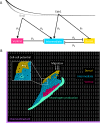
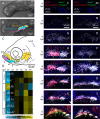
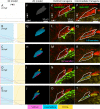



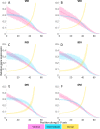

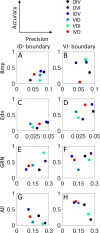
Similar articles
-
Combinatorial roles for BMPs and Endothelin 1 in patterning the dorsal-ventral axis of the craniofacial skeleton.Development. 2011 Dec;138(23):5135-46. doi: 10.1242/dev.067801. Epub 2011 Oct 26. Development. 2011. PMID: 22031543 Free PMC article.
-
Wnt signaling interacts with bmp and edn1 to regulate dorsal-ventral patterning and growth of the craniofacial skeleton.PLoS Genet. 2014 Jul 24;10(7):e1004479. doi: 10.1371/journal.pgen.1004479. eCollection 2014 Jul. PLoS Genet. 2014. PMID: 25058015 Free PMC article.
-
Wdr68 Mediates Dorsal and Ventral Patterning Events for Craniofacial Development.PLoS One. 2016 Nov 23;11(11):e0166984. doi: 10.1371/journal.pone.0166984. eCollection 2016. PLoS One. 2016. PMID: 27880803 Free PMC article.
-
Regulation of facial morphogenesis by endothelin signaling: insights from mice and fish.Am J Med Genet A. 2010 Dec;152A(12):2962-73. doi: 10.1002/ajmg.a.33568. Am J Med Genet A. 2010. PMID: 20684004 Free PMC article. Review.
-
Extracellular modulation of BMP activity in patterning the dorsoventral axis.Birth Defects Res C Embryo Today. 2006 Sep;78(3):224-42. doi: 10.1002/bdrc.20079. Birth Defects Res C Embryo Today. 2006. PMID: 17061292 Review.
Cited by
-
The Gq/11 family of Gα subunits is necessary and sufficient for lower jaw development.bioRxiv [Preprint]. 2024 Sep 19:2024.09.17.611698. doi: 10.1101/2024.09.17.611698. bioRxiv. 2024. Update in: Development. 2025 Apr 15;152(8):dev204396. doi: 10.1242/dev.204396. PMID: 39345358 Free PMC article. Updated. Preprint.
-
Neural crest development: insights from the zebrafish.Dev Dyn. 2020 Jan;249(1):88-111. doi: 10.1002/dvdy.122. Epub 2019 Oct 22. Dev Dyn. 2020. PMID: 31591788 Free PMC article. Review.
-
Hmx1 regulates urfh1 expression in the craniofacial region in zebrafish.PLoS One. 2021 Jan 19;16(1):e0245239. doi: 10.1371/journal.pone.0245239. eCollection 2021. PLoS One. 2021. PMID: 33465110 Free PMC article.
-
Multiple morphogens and rapid elongation promote segmental patterning during development.PLoS Comput Biol. 2021 Jun 23;17(6):e1009077. doi: 10.1371/journal.pcbi.1009077. eCollection 2021 Jun. PLoS Comput Biol. 2021. PMID: 34161317 Free PMC article.
-
Depolarization induces calcium-dependent BMP4 release from mouse embryonic palate mesenchymal cells.Nat Commun. 2024 Nov 12;15(1):9806. doi: 10.1038/s41467-024-53642-2. Nat Commun. 2024. PMID: 39532850 Free PMC article.
References
-
- Lawrence PA, Crick FHC, Munro M. A Gradient of Positional Information in an Insect, Rhodnius. J Cell Sci. 1972. November 1;11(3):815–53. - PubMed
-
- Thompson DW. On growth and form Cambridge [Eng.]: University press; 1917. xv, 793.
-
- Turing AM. The Chemical Basis of Morphogenesis. Philos Trans R Soc Lond B Biol Sci. 1952. August 14;237(641):37–72.
-
- Wolpert L. Positional information and the spatial pattern of cellular differentiation. J Theor Biol. 1969. October 1;25(1):1–47. - PubMed
-
- Alon U. Network motifs: theory and experimental approaches. Nat Rev Genet. 2007. June;8(6):450–61. 10.1038/nrg2102 - DOI - PubMed
Publication types
MeSH terms
Substances
Grants and funding
LinkOut - more resources
Full Text Sources
Molecular Biology Databases

